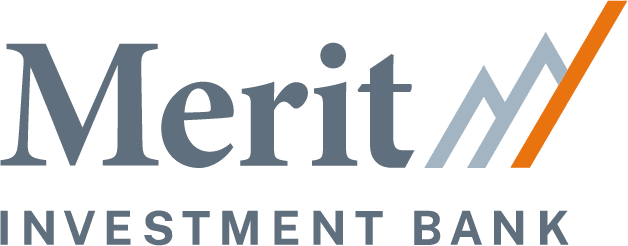
What Is an Earn-Out in M&A? How It Works and When to Use It
In a mergers and acquisitions (M&A) deal, an earn-out is a contractual arrangement between the buyer and the seller that allows the seller to receive additional compensation after the closing—typically tied to the business hitting certain future performance targets. This deferred payment is often based on achieving specific milestones related to revenue, EBITDA, gross profit, or even operational goals like customer retention or product development.
The structure is increasingly popular in today’s uncertain economic climate, offering a flexible way to bridge valuation gaps, share risk, and create alignment between both parties.
Why Use an Earn-Out? Bridging the Valuation Gap
Earn-outs are most commonly used when buyers and sellers can’t agree on a firm purchase price. Rather than walking away, they build a structure that rewards the seller for future performance and protects the buyer from overpaying.
Example: A buyer offers $40 million upfront, with an additional $10 million available over two years if the company reaches $12 million in EBITDA. This way, both sides find common ground.
This shared-risk model ensures sellers have a continued incentive to perform post-sale, while buyers can better manage downside risk—especially in volatile or recession-prone industries.
Market Trends: Earn-Out Usage Is Rising
In today’s market, with increased deal scrutiny, recession fears, and market volatility, earn-outs are being used more frequently. Recent studies suggest that 17% to 26% of middle-market transactions include some form of contingent compensation or performance-based payout.
This trend is particularly pronounced in sectors with high growth uncertainty—like technology, healthcare, and consumer products—where future performance is difficult to predict, but growth potential is high.
How Do Earn-Outs Work?
There are two primary structures for earn-outs:
1. Absolute Earn-Outs
These are based on hard, quantifiable financial goals. For example:
- $1 million additional payout if revenue reaches $25 million in Year 1
- $3 million payout if EBITDA surpasses $5 million in Year 2
These are easier to measure and enforce, making them more common in private equity-backed deals or where financial reporting is consistent and transparent.
2. Relative Earn-Outs
These are based on more subjective or operational metrics, such as:
- Customer satisfaction scores
- Market share increases
- Retention of top clients or key employees
- Launching a new product within a defined time frame
While harder to define and track, relative earn-outs can align better with strategic growth objectives and offer more flexibility.
Key Elements of a Strong Earn-Out Agreement
To ensure the earn-out doesn’t become a source of dispute, the agreement should include:
- Clear and measurable benchmarks (e.g., GAAP-based EBITDA, audited revenue)
- Defined time periods for measurement (usually 1–3 years post-closing)
- Governance rules around decision-making and capital expenditures during the earn-out period
- Transparency clauses that allow the seller to access performance data
- Dispute resolution mechanisms, such as neutral third-party accounting reviews

Risks and Pitfalls: What to Watch Out For
While earn-outs can offer a win-win, they are not without risk. Common challenges include:
- Post-sale control changes: Sellers may lose operational control, limiting their ability to achieve targets.
- Accounting manipulation: Buyers might defer revenue or increase expenses to avoid triggering earn-out payments.
- Disputes over definitions: EBITDA or net income can be interpreted in various ways depending on the accounting method.
- Misaligned incentives: The seller might prioritize short-term earnings to maximize payouts, which may not align with the buyer’s long-term strategy.
Negotiating a Fair Earn-Out
Smart earn-out negotiations consider more than just financial metrics. Some key tips include:
- Limit the duration: One to three years is standard. Longer periods create more complexity.
- Include caps and floors: Set minimum and maximum payouts to define the upside and downside.
- Use multiple metrics: Combining revenue and EBITDA or including operational goals adds balance.
- Protect the earn-out: Consider a role for the seller post-close (e.g., President or Advisor) to preserve influence over outcomes.
Real-World Example
Let’s say a SaaS company sells for $20 million upfront, with an additional $5 million contingent on ARR (Annual Recurring Revenue) reaching $15 million within 18 months. The seller, who stays on as CTO, has access to performance dashboards and quarterly performance reports to track progress.
Both sides agree that if ARR hits $13 million, the payout is reduced proportionally. This ensures alignment while acknowledging potential macroeconomic headwinds.
Final Thoughts: Are Earn-Outs Right for You?
Earn-outs are powerful tools in deal structuring, especially when used thoughtfully. They allow for:
- Deal completion in tough valuation environments
- Continued seller participation post-transaction
- Protection for buyers against underperformance
But they must be carefully constructed with clear terms, mutual trust, and sound legal advice to avoid post-close friction.
At Merit Investment Bank, we help founders navigate the complexities of earn-outs and other performance-based deal structures. Whether you’re considering a partial exit or full sale, we guide you to protect value, minimize risk, and structure a deal that supports long-term success.
Talk to the Experts at Merit Investment Bank
J. Craig Dickens
Chairman
Craig.Dickens@MeritInvestmentBank.com
253-370-8893
Securities offered through Finalis Securities LLC Member FINRA/SIPC. Merit Investment Bank and Finalis Securities LLC are separate, unaffiliated entities.

0 Comments